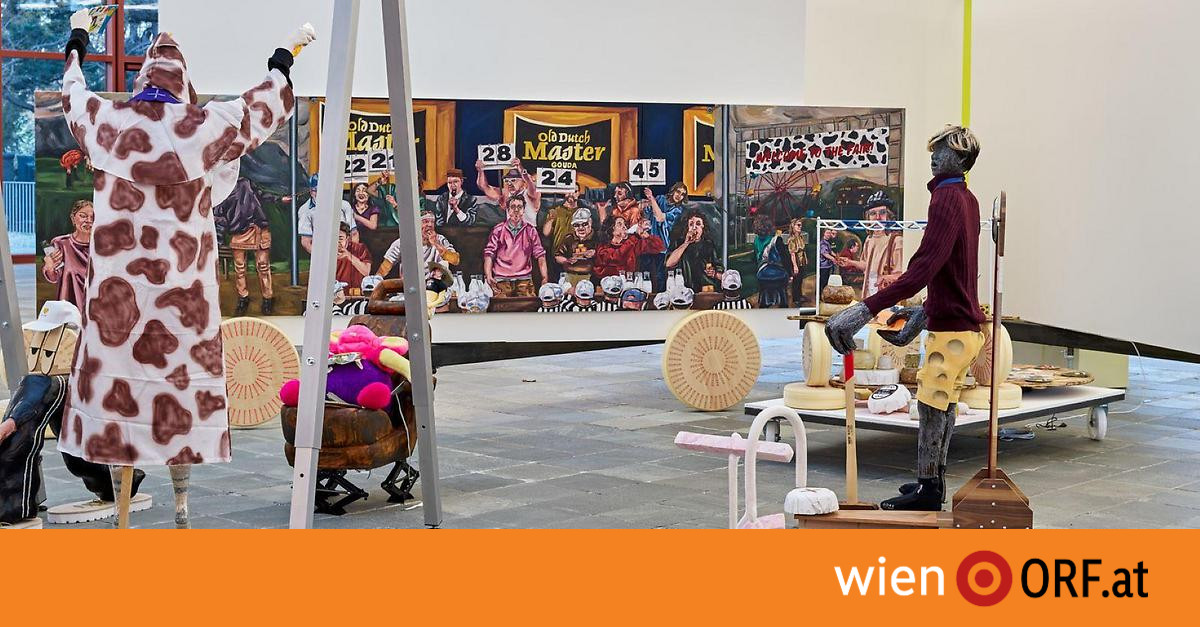The current exhibition follows Belvedere 21’s “About the New. Youth scenes in Vienna “from 2019,” explained General Director Stella Röllig during a press tour on Thursday. The current project follows from this – with an expanded view of Salzburg and Graz. Then, as now, it was “an attempt at a tentative assessment, an overview” The start of the three-part series, which will run until January 2024, can be watched from Friday.
latent overload
It had to be particularly dynamic, which is why a team of five curators chose art stands themselves on the one hand and invited art spaces to design sub-areas as they saw fit on the other hand. The result is a multifaceted mixture of installation, paint, textiles, craftsmanship, and sound that is overwhelming at first. Only gradually can references be made and the stories behind individual works emerge – perhaps best through guided tours.
Exhibition notice
“About the new. Sights of Vienna and beyond ”at Belvedere 21. Part 1: From Friday to July 2, Part 2: From July 13 to October 15, Part 3: From October 26 to January 14, 2024.
You soon set your sights on what is probably the toughest contribution. Gabriele Edlbauer and Julia S. Godman staged a cheese-eating contest with an easel, landscape painting, stuffed animals and a spooky priest figure. At first glance, cheerful and lively, a closer look reveals something horrible: people vomit, defecate, and die. After all, the ambiguous thesis is reflected here that lactose intolerance only affects people who don’t belong to a white-dominant society, as explained by Andrea Kopranowicz of the team of curators.
Bubble Gum Tiles and Alexa Awareness
In general: what is supposed to be normal is, of course, questionable in many ways. In their multi-part composition, the duo Maggessi / Morusiewicz deal with, among other things, odd positions in Polish film from the 1960s to the 1980s. On the other hand, Heti Prack invents a whole story about two gay artisans from Red Vienna in the 1930s around two of his marble stucco works, and Francesca Aldejani makes references to non-Western religions and magical practices using totems and signs. Made of textiles, reptile skin, and glass eyes.
Artificial intelligence is a theme in the mix as is the issue of land use. In her video work “Talk to Me,” Hui Yi wants to know if Alexa is conscious, while Julia Haugender, with her tile “Juicy Fruit,” alludes to the namesake flavor of giant chewing gum Wrigley’s and thus brings up the question of resources.
Convertible gallery space
The exhibition structure—designed by AKT Bureau, which also helped design Austria’s appearance at this year’s Venice Architecture Biennale—doesn’t set a course. Paravan-like units were attached to four structures, meaning the setting could be modified again and again as the show progressed or with parts two and three. At the same time, this creates many visual hubs and communication options. “We wanted to get away from the ‘white cube’, from the architecture of the trade fair,” explained co-curator Ana Petrovic of APA.
There is also space for performances – for example when the Kunstraum School invites the audience to ‘talk to strangers’ on six set dates – a dialogue with an unknown person – or Linz’s Art-Space Memphis negotiates combat techniques and democratic processes.
Factory history in soap
Ana de Almeida is less heavy. Offers 100 colored soaps. It also contains the history of the Schicht factory, famous for its deer soap and Ceres coconut oil product. The artist tossed snippets of advertising brochures, photos and poster names, but also rubble and dust from the now closed factory. The work is called “From Fat and the City.”

“Travel aficionado. Certified problem solver. Pop culture guru. Typical writer. Entrepreneur. Coffee trailblazer.”







More Stories
The stage is being set for Taylor Swift.
Heidi Klum and Caro Daur & Co. also love these chic shirts for everyday wear.
Local premiere in Kirchstetten – noe.ORF.at